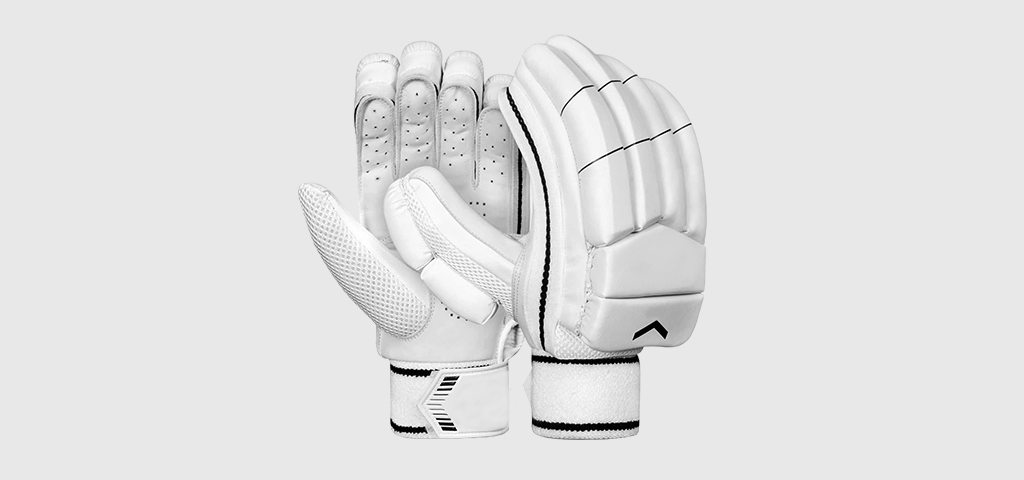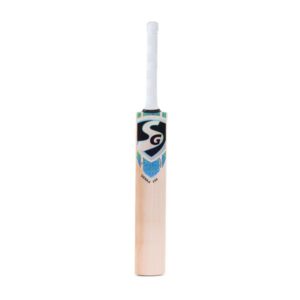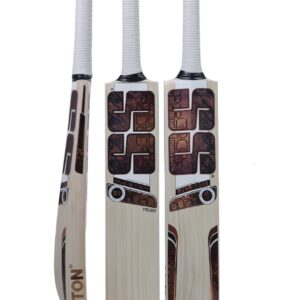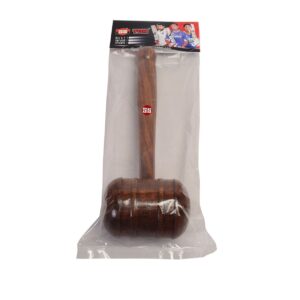Imagine this: you’re walking out to bat on a sunny afternoon, the crowd (or your teammates at the local park) watching intently. You tap the pitch, take guard, and await the bowler’s run-up. At that moment, the last thing you want to worry about is whether your hands are protected or if your grip on the bat will slip. That’s where the perfect pair of cricket batting gloves makes all the difference. In cricket, batting gloves aren’t just an accessory – they’re essential cricket gear that protects your hands and enhances your performance on the crease. Choosing the right gloves can boost your confidence and safety, letting you focus on hitting runs rather than nursing stinging fingers.
In this comprehensive guide, we’ll explore how to choose the ideal batting gloves for your needs. We’ll go through everything from finding the perfect fit and understanding materials, to evaluating protection features and budgeting for quality. Whether you’re a beginner just getting your first cricket kit or an experienced batsman looking to upgrade, these tips (backed by expert insights and real examples) will help you make an informed decision. Let’s dive in and get a grip – literally!
Why Are Batting Gloves Important?
Batting gloves are an essential part of a cricketer’s gear, offering multiple advantages that enhance performance, comfort, and safety while at the crease. Whether you are a professional player or an amateur, the right pair of batting gloves can significantly impact your game. Here’s why batting gloves are a crucial component of a batter’s equipment:
1. Enhanced Grip for Better Shot Execution
A secure grip on the bat handle is vital for controlling shots and generating power. Batting gloves feature textured palms, made from high-quality leather or synthetic materials, to ensure a non-slip grip. This improved grip allows batters to execute shots with precision, whether they’re playing delicate wristy strokes or aggressive drives.
2. Protection Against Blisters, Injuries, and Impact
Repeated batting sessions can lead to friction between the bat handle and bare hands, causing painful blisters. Batting gloves act as a protective layer, reducing direct friction and preventing discomfort. Additionally, they provide essential padding that absorbs the impact of fast deliveries, protecting fingers and palms from potential injuries caused by hard-hitting balls or unexpected bouncers.
3. Comfort and Flexibility for Free Movement
A well-fitted pair of batting gloves ensures that players can move their wrists freely without any restrictions. Modern gloves are designed with segmented padding and flexible joints to allow natural wrist movements. This flexibility plays a crucial role in executing different types of shots, from defensive blocks to lofted strokes, without hindrance.
4. Sweat Absorption for a Firm Hold
Sweaty palms can make it challenging to maintain a firm grip on the bat, increasing the risk of slippage and mistimed shots. Batting gloves are made with moisture-wicking materials and ventilated mesh panels that help absorb sweat, keeping hands dry even during long innings. This feature ensures a consistent grip throughout the game, reducing the chances of losing control over the bat.
Why Choosing the Right Batting Gloves Matters

Cricket balls are hard and unforgiving, and your hands are perhaps the most vulnerable part of your body when batting. A mis-timed shot can jam your fingers between the ball and the bat handle, potentially causing bruises or even fractures if you’re unprotected. Good batting gloves serve as critical hand protection, absorbing the impact of fast deliveries so you don’t end up with swollen fingers or worse. The padding in modern gloves is designed to disperse shock and reduce the risk of broken bones, which is a big deal when you’re facing bowlers who can crank up serious speed.
Beyond safety, gloves also play a major role in performance and comfort. Ever tried batting without gloves? Your palms would sweat, your grip would slip, and every vibration from hitting the ball would jolt your hands. Quality gloves improve your grip on the bat, thanks to textured leather palms and snug fits that help you hold the handle securely. This secure grip means better control when playing shots, from delicate late cuts to powerful drives. Additionally, gloves provide comfort by reducing blistering and cushioning your hands – essential for long innings under the sun. Knowing your hands are well-protected also gives you confidence; as a batsman, being confident means you can focus on watching the ball and playing your natural game without fear.
In short, the right pair of gloves can be the difference between confidently punching a fast ball through the covers or flinching because your last mis-hit still hurts. They are as crucial to a batsman as a helmet or pads, completing your safety kit and allowing you to bat with freedom.
Fit and Sizing: Getting the Gloves That Feel "Just Right"
When it comes to batting gloves, fit is king. No matter how expensive or well-made a glove is, if it doesn’t fit your hand properly, it won’t perform for you. A glove that’s too tight can restrict your hand movement and make it hard to flex your fingers around the bat handle; too loose, and it might slip or bunch up, ruining your grip. You want a snug, secure fit that still allows full range of motion. The gloves should feel like a natural extension of your hand – secure but not strangling.
1. Size Categories
Cricket gloves usually come in standard sizes (often labeled as Boys, Youth, Small Men’s, Men’s, Large Men’s, etc.). These roughly correspond to hand length measurements. For example, a typical “Men’s” size glove is for a hand around ~210 mm (21 cm) from the wrist to the tip of your longest finger. If you’re a smaller adult or teen, you might need a Youth or Small Men’s size (~190–200 mm hand length), whereas larger hands might require Large/Oversize. It’s a good idea to measure your hand and check size charts when available. Keep in mind sizing can vary between brands, so a “Medium” in one brand might fit differently in another – another reason why trying them on if possible is invaluable.

2. Try Them On
Whenever you can, physically try on different gloves before buying. Wiggle your fingers, make a faux batting grip, and see how it feels. The gloves should hug your fingers and palm without pinching. Ensure the fingertips reach close to the end of the glove but don’t smash against the seams.
Also, check that the velcro wrist strap tightens firmly around your wrist – this keeps the glove in place and provides support. If you’re shopping online and can’t try them, use the measurements and consider reading reviews for info on fit (some gloves might run small or large).
3. Handedness
One thing beginners sometimes overlook is that batting gloves are often sold in left-handed or right-handed versions. This doesn’t mean left-handed gloves for left-hand people exactly; rather, it refers to which hand is the “leading hand” on the bat.
If you bat right-handed, your left hand is on top of the bat handle – it’s your lead hand that takes the brunt of impact, so gloves for right-handed batters have extra padding on the left glove (and vice versa for left-handed batsmen).
Make sure you choose gloves that match your batting stance so that the correct glove has the additional protection where you need it.
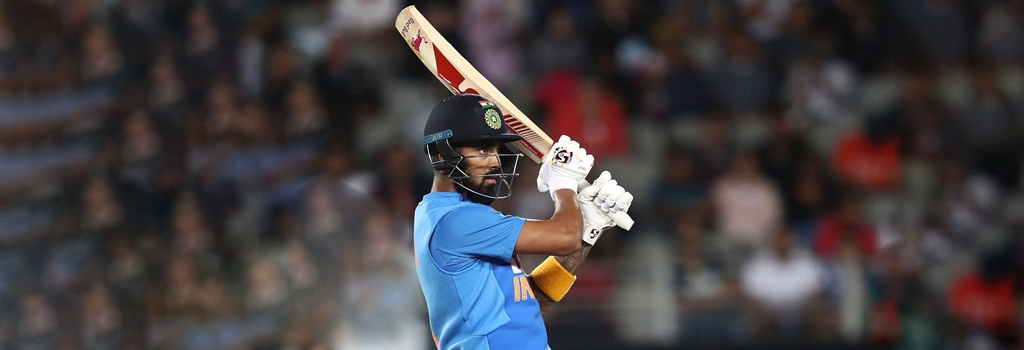
3. A Note on Inners
Some players also wear thin inner gloves (often made of cotton or sweat-wicking material) under their batting gloves. These can improve comfort by absorbing sweat and can make a slightly loose glove fit more snugly. If you plan to use inners, factor that in – you might need just a touch more room. Try your gloves with and without inners to see what feels best.
At the end of the day, a well-fitted glove should feel comfortable the moment you put it on. There shouldn’t be any painful pressure points, and you shouldn’t have to “fight” the glove to make a fist. If you order a pair and the fit isn’t quite right, it’s worth exchanging for a better size. Your hands will thank you when you’re at the crease for a long innings!
What’s Next?
By now, you should have a clear idea of what makes a great pair of cricket batting gloves and how to pick one that suits you. We’ve covered how crucial a good fit is, dissected materials and padding, and examined why features like ventilation and finger inserts matter. We’ve also looked at various brands and budgets – showing that whether you’re splurging on the latest pro-level gloves or grabbing an affordable pair for weekend matches, there’s something out there that will work for you.
The key takeaway is to choose gloves that make you feel confident and comfortable at the crease. When you have the right gloves on, you can forget about your hands and concentrate on scoring runs. No more worrying about that painful knock or losing your grip mid-swing – the gloves become an asset to your game.

Types of Cricket Batting Gloves
Selecting the right type of batting gloves is crucial for ensuring comfort, protection, and performance at the crease. Cricket batting gloves are primarily categorized into two types based on their design, padding, and flexibility. Understanding their key differences can help players make an informed choice depending on their playing style and game format.
1. Traditional Sausage-Finger Gloves
Sausage-finger gloves are the classic choice for cricketers who prioritize protection over flexibility.
Key Features:
- Uniform, Rounded Padding: These gloves have continuous cylindrical padding across all fingers, providing maximum coverage.
Superior - Protection: The thick padding acts as a robust shield against fast deliveries, making them ideal for facing pace bowlers.
- Preferred forLonger Formats: Test cricketers and first-class players often opt for these gloves since they provide solid hand protection during long batting innings.
Slightly Less Flexible: While they offer outstanding safety, sausage-finger gloves may slightly restrict finger movement compared to modern alternatives.
👉 Best for: Defensive batsmen, longer innings, and formats where impact protection is critical, such as Test cricket and first-class matches.
2. Modern Split-Finger Gloves
Split-finger gloves are designed with segmented padding, offering increased flexibility and wrist mobility.
Key Features:
- Segmented Padding Design: The fingers are divided into multiple sections, making it easier to move and grip the bat naturally.
- Lightweight & Flexible: These gloves provide better dexterity, allowing players to execute quick reflex shots with ease.
- Ideal for Shorter Formats: T20 and One-Day players prefer these gloves since agility and shot-making require enhanced wrist mobility.
- Slightly Less Protective: While they offer better movement, split-finger gloves may have marginally less protection compared to sausage-finger gloves due to reduced padding density.
👉 Best for: Aggressive stroke players, T20 and One-Day cricket, and batters who rely on quick hand movements for innovative shots.
Which Gloves Should You Choose?
If you play longer formats and face high-speed deliveries regularly, sausage-finger gloves offer the best protection. If you prefer attacking strokes and need enhanced wrist flexibility, split-finger gloves are the better option.
Ultimately, the right choice depends on individual playing styles and the format of the game. Professional cricketers often customize their gloves to get the best of both worlds—mixing protection with mobility.
Here are some of the best-rated cricket gloves for different levels of play:
- Beginners: SG Campus Cricket Gloves (Affordable & Durable)
- Intermediate: SS Gladiator Gloves (Extra Protection & Comfort)
- Advanced Players: Gray Nicolls Legend Gloves (Premium Quality & Maximum Grip)
- Pro-Level: Kookaburra Pro 1200 Gloves (Innovative Design & Maximum Flexibility)
Final Thoughts: How to Pick the Right Cricket Gloves
Choosing the right pair of cricket batting gloves is a game-changer. From selecting the right glove size to considering padding, grip, and material, every detail matters. Whether you’re just starting or playing professionally, Investing in high-quality cricket gloves from trusted brands like Gray Nicolls, SS, SG, and Kookaburra ensures durability and performance. ensures comfort, protection, and better performance on the pitch. A well-informed decision can enhance your batting longevity, comfort, and overall confidence.
Need Help Choosing?
If you’re still unsure which cricket batting gloves are best for you, visit our store for expert recommendations and top-rated cricket gloves suited for your playing style! With our detailed size guide and product reviews, you can confidently pick the gloves that match your needs and budget.
Explore the Finest Cricket Gear at DP Azad Sports!
At DP Azad Sports, we offer a wide selection of premium cricket bats, including English Willow, Kashmir Willow, and Tennis Ball bats. Designed for power, precision, and durability, our bats are trusted by players at every level.
Don’t wait to elevate your game! Shop now and find the cricket bat that matches your style and skill. Buy today and step onto the field with confidence!
FAQs on Cricket Batting Gloves
How often should I replace my gloves?
It depends on usage. Professionals replace them every season, while casual players can use them for 2-3 years with proper care.
What gloves are best for sweaty hands?
Look for Pittards leather palms and ventilated mesh inserts.
Should I buy expensive gloves as a beginner?
Not necessarily. Start with mid-range gloves offering decent protection and upgrade as you progress.

